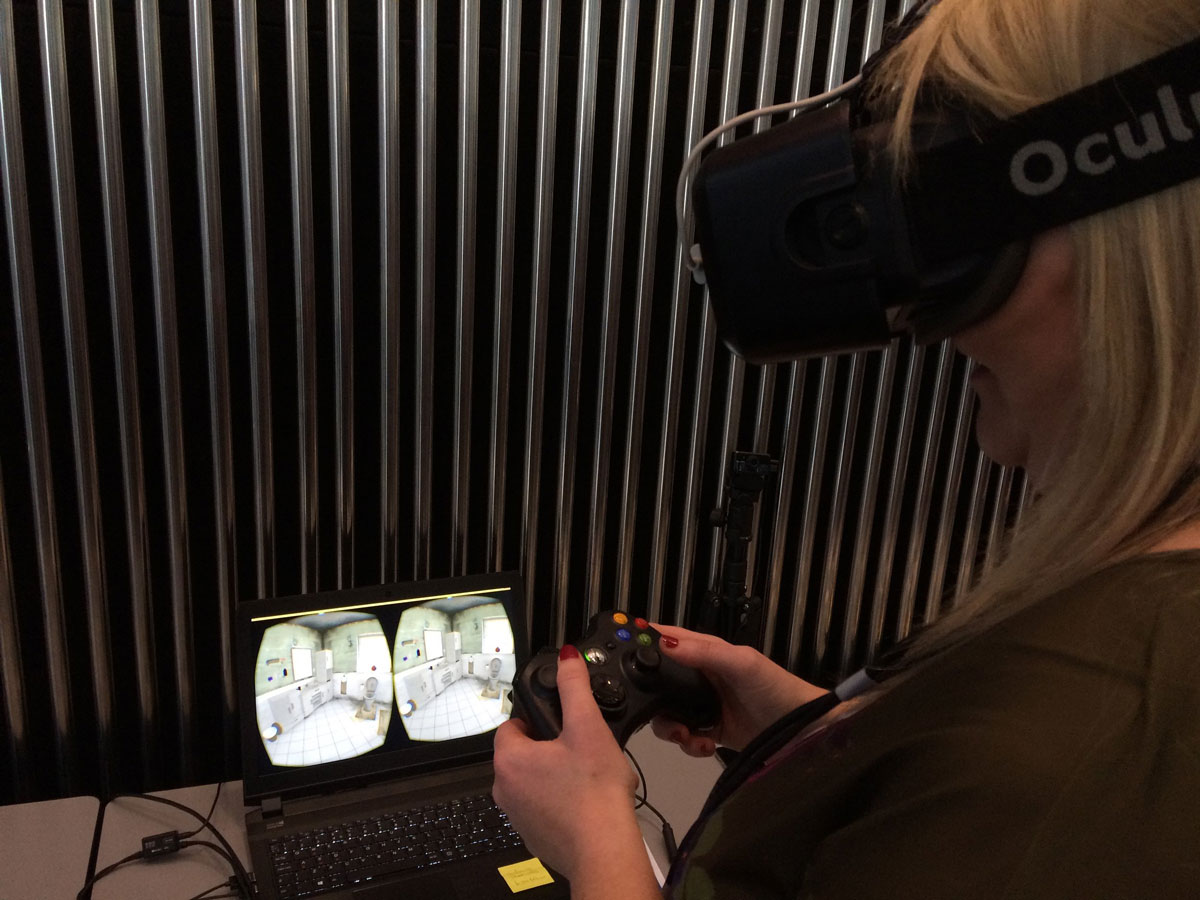

This project used VR (Hololens, and then HTC Vive) to recreate an experiment which tests spatial memory in rats.
In the virtual space, the participant is briefly shown a point that they must walk to. The aim is to recognise and memorise surroundings to then successfully make their way to the point using memory, with visual aids such as chairs, picture frames and other assets within the virtual environment.
The experiment measured how long it took the participant to get from A to B, whilst also recording the exact steps they took, so as to spot any signs of cognitive deficiency.
We created a virtual bathroom to provide a controllable, digital version of exposure therapy for young people with a phobia of germs.
We translated existing evidence-based therapy into a VR experience to:

 Meet the team
Meet the team
This project focused on helping those suffering from addiction to practice scenarios which may arise once they had finished treatment for drug addiction. In a VR environment, they could do things such as smash up drugs paraphernalia, or throw things out of a window to destroy it. The hope was that by facing these scenarios within VR they would then feel a bit more prepared to face them in real life when the time comes.
We were approached to develop a VR experience that - using physiological tracking - tests whether or not it is safe to release somebody who has been sectioned due to pyromania back into the community. The system monitors the heart rate of the user as they simulate being in a room with a fire, where they are given the opportunity to make the fire grow, or to extinguish it.